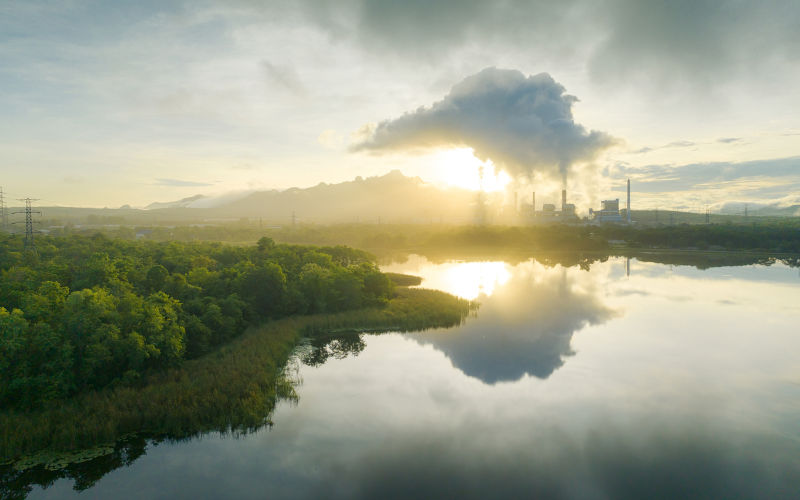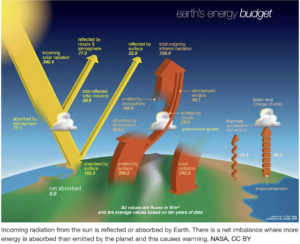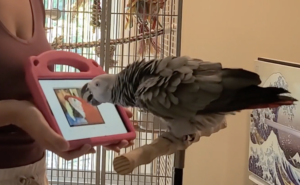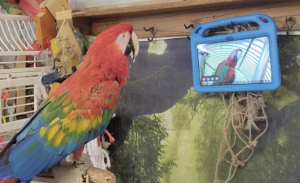Greenhouse gas emissions continued to increase in 2022, as did the effects on Earth’s climate and the consequences for humans. Pet trading within Australia needs to be more strictly monitored and regulated.
Global Climate Report 2022
The World Meteorological Organisation’s (WMO) 2022 update continues to tell the same sad story of political neglect:
- Emissions of the three principal greenhouse gases – CO2, methane and nitrous oxide – continued to increase. For methane, it was the largest annual increase ever recorded.
- So, of course, the total level of greenhouse gases in the atmosphere increased again.
- The global mean surface temperature was 1.15oC above the 1850-1900 average, making 2022 the fifth hottest year on record (despite three years of La Nina) and the last eight years the warmest eight.
- The heat content of the oceans down to 2000 metres continued to increase.
- As a result of both melting polar ice and warmer water, the global mean sea level rose again. Over the last 30 years, it has risen by 10cm and the during the last decade the rate of rise has been double what it was in the 1990s.
- Ocean acidification increased again.
- In September, the Arctic sea ice extent was the 11th lowest minimum on record and in February the Antarctic sea ice extent was the lowest on record.
- Glaciers around the world have lost mass in all but five of the last 73 years. The annual loss in 2022 was second only to 2019.
- Regardless of how successful our climate action is over the next century, the seas will continue to rise and glaciers and sea ice will continue to melt for thousands of years.
- Climate-related phenomena contributed to the world experiencing more frequent and more severe extreme weather events such as cold and heat waves, marine heat waves, floods, droughts, bushfires and storms.
- Such high impact climate events threaten to undermine the achievement of many of the Sustainable Development Goals by, for instance, increasing poverty and inequalities; creating water scarcity, food insecurity and health problems; damaging infrastructure; causing conflict and displacing populations; and increasing biodiversity loss and ecosystem collapse.
The WMO concludes that the climate will continue to change unless the underlying drivers are addressed: ‘Without immediate and deep greenhouse gas emissions reductions across all sectors, it will be impossible to keep warming below 1.5oC’. The WMO derives hope from the fact that wind and solar now provide 12% of global electricity but fail to note that fossil fuels still provide about 80% of all global energy.
Pet trading in Australia
Over a 14 week period in 2019/20, over 109,000 live vertebrates (not including mammals) were advertised for sale within Australia on twelve online sites. These sales involved 1192 species, of which 667 (56%) were non-native. It is illegal to import 279 of the species that were traded. 81 of the species were threatened. Some of the traded animals belong to species not yet scientifically described and named.
Birds were by far the commonest animals advertised – approximately two-thirds of the total trades. The sales involved 184 species, over 60% of which were non-native.
Fish were involved in approximately 30% of the trades. Over 60% of the 805 species were non-native.
Approximately 10% of the trades were for reptiles. All 186 species were native.
Only 216 amphibians involving 17 species (1 non-native) were advertised for sale.
There are multiple problems and risks associated with these trades. Some of them probably involved breaches of the law, if not at this particular point of sale, at some stage in the pets’ travels. Some constituted a threat to Australia’s biosecurity and ecosystems if the pets escape (or are released) into the wild. Also worrying is the threat to the sustainability of the wild populations of some of these animals and the welfare of many of the individuals being traded and kept as pets.
The report’s authors expressed concern about the highly unregulated trading of non-native animals as pets within Australia, particularly as it seems to be occurring in much higher volumes than previously appreciated. They concluded that ‘Australia’s biosecurity priorities [for imported animals] are commendable, yet its management of non-native pets falls short of a system that comprehensively reduces known and/or identifiable risks.’ They recommended increased monitoring of domestic trading activities and substantial changes to national legislation to reduce the volume of non-native pets being traded.
Barry Jones: the 7Cs of Australians’ carbon footprint
It appeared in a very recent P&I but I’m worried that some of you may have missed Barry Jones’s very pithy 7Cs summary of why the average Australian’s greenhouse gas emissions are so high, so here it is again.
‘There are seven words, all starting with the letter ‘C’ which determine Australia’s No. 1 ranking of greenhouse gas emissions per capita: nearly double that of China (although China is far ahead in absolute numbers).
They are:
- Coal
- Cities
- Cars
- Cement
- Chain-saws
- Cows
- Consumption
Apart from our domestic consumption of coal we are among the world’s greatest exporters. Every tonne of coal burnt produces 3.67 tonnes of carbon dioxide which stays in the atmosphere for about a century, changing its chemistry and physics.
Australia’s pattern of urban development is almost unique – we have two cities with 5 million people, two with 2 million and a fifth with 1 million. Britain, with a population of 67 million in an area that could fit into Victoria, has only two cities above one million.
Our low-density cities are huge – Melbourne is bigger than London, Paris or Delhi. This leads to a very high level of car dependence, and building freeways makes cities even bigger and more car and truck dependent.
The manufacture of cement is exceptionally high in greenhouse gas emissions and its use is increasing in housing, construction generally and public works.
Only 16 per cent of Australia’s land mass is forested, and in many regional communities use of the chain-saw provides economic security – at least in the short term.
What is tactfully described as ‘enteric emissions’ from beef cattle is very significant. Methane is more damaging than CO², but stays in the atmosphere for relatively short periods.
Our very high – but uneven – levels of consumption leads to prodigious production of waste and this contributes to greenhouse gas emissions.’
Good to see BJ still using rational arguments, presented simply, to fight the good fight.
Earth’s Energy Budget
I think most of us now understand that global warming is caused by the Earth retaining every day, year and decade more of the energy that comes from the sun than it has done over the last 12,000 years (the unusually climatically stable Holocene epoch). The Earth’s Energy Budget, which has been in a relatively steady but delicate balance throughout that period, is now positive, so to speak. All this is the result of human activities during the last 200 years that have increased the concentration of ‘greenhouse gases’ in the atmosphere. I suspect, however, that many of us get a bit hazy over the physics of all this: reflection, absorption, ultraviolet, infrared, albedo effect, clouds, snow, dark and light surfaces, etc.
The diagram above presents some of the processes at play in all of this – I suggest focusing on the relatives sizes of the elements rather than the actual numbers.
NASA also has some relatively short and understandable storymaps on this topic, including the fact that across the world over a whole year the amount of energy from the sun that hits every square metre of the Earth’s surface is about the same as the energy produced by six 60 watt light bulbs. Who’d have thought it?
Parrot-to-parrot video calls
Parrots are very popular pets – 99 of the 184 bird species traded in the earlier article were parrots and it is estimated that there are over 20 million parrot pets in the USA alone. No doubt most cages have single occupants and as most wild parrots are gregarious, it wouldn’t be surprising if pet parrots were bored and lonely.
An experiment in the USA trained pet parrots to initiate video calls to other pet parrots. The main findings were that most parrots learnt to initiate calls, made more calls when they received more calls, and reacted to and interacted with their onscreen buddies, differently to different parrots.
While this appears to have been a very carefully and sensitively designed experiment, with aims similar in principle to ‘harm reduction’ strategies in humans such as needle and syringe exchanges for intravenous drug users, when one watches the parrots in their interactions with both their owners and their feathered friends, one does have to wonder about the appropriateness of keeping parrots as pets at all.
Tellingly, the published article and the videos about this experiment refer not to the parrots’ ‘owners’ but their ‘caretakers’. One might equally refer to them as jailers. Also, I can’t help questioning the reference to ‘interspecies ethical enrichment’. What on earth does that mean?
I hope that no private (or even public) human incarceration organisations see this report. They might get some very unsavoury (or rather, more unsavoury) ideas about increasing the use of solitary confinement.
Peter Sainsbury is a retired public health worker with a long interest in social policy, particularly social justice, and now focusing on climate change and environmental sustainability. He is extremely pessimistic about the world avoiding catastrophic global warming.




